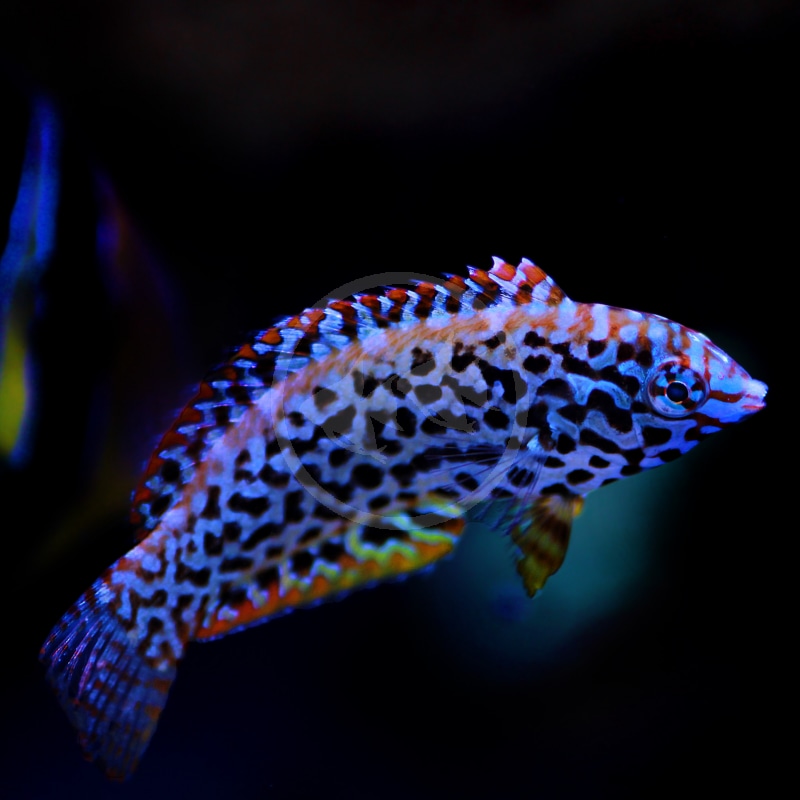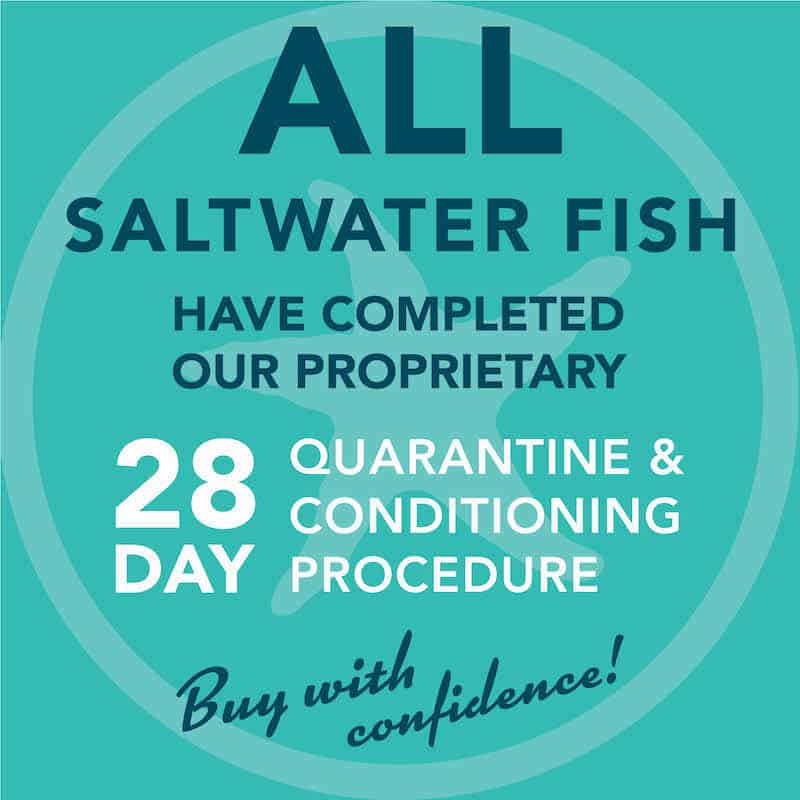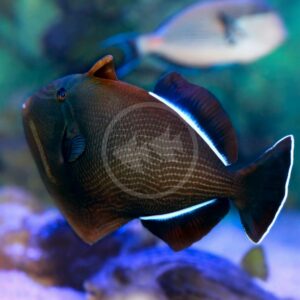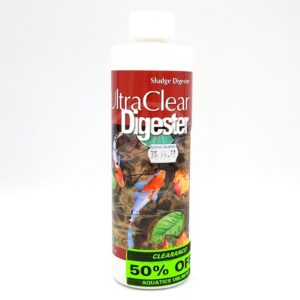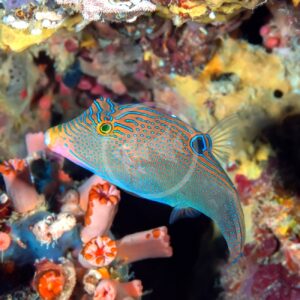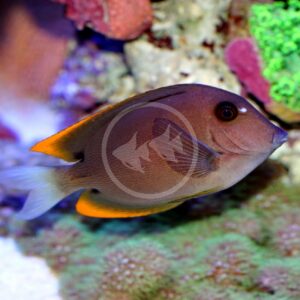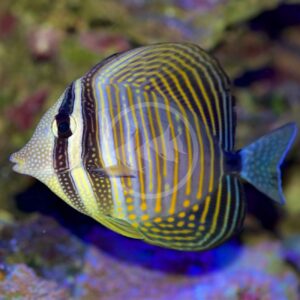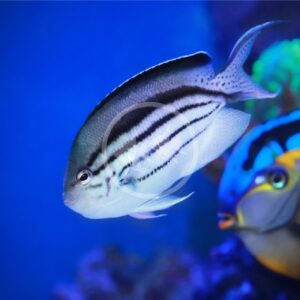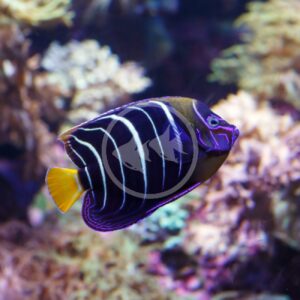Care Level: Advanced
Temperament: Peaceful
Reef Compatible: Yes
General Description: The Black Spot Leopard Wrasse, also known as just the Leopard Wrasse, has a wide distribution across the Indo-Pacific and Indian Ocean. The Leopard wrasse is a beautiful fish that exhibits different color patterns based on sex. Most frequently encountered in the hobby are females, which have a pearly white body covered in irregular brown to black spots with blue margins. Females may also have accents of yellow to red on their fins. Males, on the other hand, have an orange-red color base that is heavily mottled in a turquoise-green spotted pattern. The Leopard wrasse should not be mistaken for the less common Ornate Leopard Wrasse (Macropharyngodon ornatus) that has a reddish color base with a much smaller, and more uniform, spotted pattern. The Leopard wrasse requires exceptional dedication and attention from the hobbyist in order to thrive. Like all members of the genus Macropharyngodon, the Leopard wrasse absolutely requires a moderately-sized to fine sandy substrate in order to be able to bury themselves at night for protection or if felt threatened during daylight. In fact, it is very common for your newly introduced Leopard wrasse to immediately bury themselves once released into the aquarium. A group of female Leopard wrasses can be kept together with success, and is encouraged for socialization, with or without a male; more than one male will have territorial disputes. Fear not if no male Leopard wrasses are available when you’re looking to purchase because these fish are hermaphrodites, meaning that an individual has both male and female sex organs. If you acquire a group of female Leopard wrasses, chances are the most dominant individual over a period of time will transition into a male. Leopard wrasses can reach an adult size of approximately 5″.
Diet Requirements: Leopard wrasses are carnivores, actively hunting tiny crustaceans throughout the day. Encouraging an Leopard wrasse to accept prepared foods can be a challenge. We have found that offering live brine shrimp at the beginning can gain the interest of particularily fussy or stubborn individuals. Note: All of our Leopard wrasses for sale are eating frozen foods. Ultimately, a diet consisting of various meaty preparations such as brine shrimp, mysis shrimp, and other mixed frozen foods will maintain optimal health and coloration. We highly encourage soaking frozen foods in vitamin and fatty acid supplements, as Leopard wrasses have very high metabolisms. Multiple, small feedings per day rather than one large feeding can also help and in turn create more of a natural environment for the Leopard wrasse as it would feed in the wild. Leopard wrasses may accept high quality flake or pellet foods with time, which can be great for nutritional gaps and variety. Leopard wrasses have an incredible natural ability to control nuisance red Planaria flatworms that sometimes hitch hike on corals or live rock.
Care Requirements: A very established, minimum 55 gallon aquarium with a 3″ sandbed at the very least is needed for a Leopard wrasse. Upgrade the aquarium accordingly to accomodate a group; more Leopard wrasses require a greater abundance of natural food resources. Leopard wrasses enjoy a variety of rock work and crevices to swim through and around while they hunt. Such live rock arrangements can also help to make it feel secure and encourage more outgoing behavior. The Leopard wrasse is not tolerable of nitrite or ammonia spikes, and an established tank also offers more abundant microinvertebrates and crustaceans (such as amphiopods) for it to prey on. Given their peaceful and timid nature, a Leopard wrasse should not be kept with overly aggressive species, especially those that can outcompete it in food resources. It is best to add Leopard wrasses before larger or more active fish in order to allow them to acclimate to the environment and begin feeding. Recommended water conditions, 72-78° F, KH 8-12, pH 8.1-8.4, salinity 1.020-1.025.
Purchase Size: Small: 2″ or less; Medium: 2-1/4″ to 3; Large: 3-1/4″ to 4″
Note: Your item may not look identical to the image provided due to variation within species. Purchase sizes are approximate.


